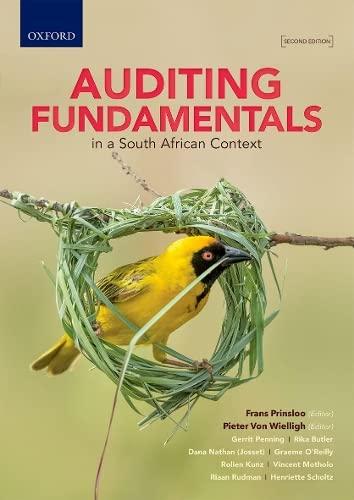Answered step by step
Verified Expert Solution
Question
1 Approved Answer
question 12: Hi, Please check these questions and fix if there are errors. The executive team at Current Designs has gathered to evaluate the company's
question 12:



Hi, Please check these questions and fix if there are errors.
The executive team at Current Designs has gathered to evaluate the company's operations for the last month. One of the topics on the agenda is a special order to produce a batch of 20 kayaks for a client. Mike Cichanowski asked the others if the special order caused any particular problems in the production process. Dave Thill, the production manager, made the following comments: "Since we wanted to complete this order quickly and make a good first impression on this new customer, we had some of our most experienced type I workers run the rotomould oven and do the trimming. They were very efficient and were able to complete that part of the manufacturing process even more quickly than the regular crew. However, the finishing on these kayaks required a different technique than what we usually use, so our type II workers took a little longer than usual for that part of the process." Deb Welch, who is in charge of the purchasing function, said, "We had to pay a little more for the polyethylene powder for this order because the customer wanted a colour that we don't usually stock. We also ordered a little extra since we wanted to make sure that we had enough to allow us to calibrate the equipment. The calibration was a little tricky, and we used all of the powder that we had purchased. Since the number of kayaks in the order was fairly small, we were able to use some rope and other parts that were left over from last year's production in the finishing kits. We've seen a price increase for these components in the last year, so using the parts that we already had in inventory cut our costs for the finishing kits." Based on the comments above, predict whether each of the following variances will be favourable or unfavourable. If you don't have enough information to make a prediction, indicate by using "Not Enough Information." 1. Quantity variance for polyethylene powder. Unfavourable 2. Price variance for polyethylene powder. Unfavourable 3. Quantity variance for finishing kits. Not Enough Information v 4. Price variance for finishing kits. Favourable 5. Quantity variance for type I workers. Favourable 6. Price variance for type I workers. Not Enough Information 7. Quantity variance for type II workers. Unfavourable 8. Price variance for type II workers. Not Enough Information v Diane Buswell examined some of the accounting records and reported that Current Designs purchased 1,230 kg of pellets for this order at a total cost of $1,968. Twenty finishing kits were assembled at a total cost of $3,220. The payroll records showed that the type I employees worked 37 hours on this project at a total cost of $518. The type II finishing employees worked 70 hours at a total cost of $805.00. A total of 20 kayaks were produced for this order. The standards that had been developed for this model of kayak are as follows for each kayak: 55 kg of polyethylene powder at $1.5 per kilogram 1 finishing kit (rope, seat, hardware, etc.) at $166 2 hours of type I labour from people who run the oven and trim the plastic at a standard wage rate of $14 per hour 3 hours of type II labour from people who attach the hatches and seat and other hardware at a standard wage rate of $11 per hour. Calculate the eight variances that are listed below. (Round price variance for Type II workers to 2 decimal places, e.g. 15.25 and all other answers to O decimal places, e.g. 25.) Quantity variance for polyethylene powder -195 Unfavourable Price variance for polyethylene powder -110 Unfavourable Quantity variance for finishing kits $ 0 Neither favourable nor unfavourable Price variance for finishing kits $ 100 Favourable Quantity variance for type I workers $ 42 Favourable Price variance for type I workers $ 0 Neither favourable nor unfavourable Quantity variance for type II workers ta -110 Unfavourable Price variance for type II workers $ -35 UnfavourableStep by Step Solution
There are 3 Steps involved in it
Step: 1

Get Instant Access to Expert-Tailored Solutions
See step-by-step solutions with expert insights and AI powered tools for academic success
Step: 2

Step: 3

Ace Your Homework with AI
Get the answers you need in no time with our AI-driven, step-by-step assistance
Get Started


